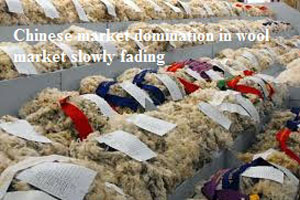
Chinese market domination in wool market slowly fading
YarnsandFibers News Bureau 2016-04-07 16:30:00 – SydneyAt the conference held in Sydney Australia this week to discuss the latest wool trands, innovation and what the future will bring for the industry, a large contingent of Chinese delegates as well as buyers and sellers from all over the world, including Argentina, Uruguay, Italy and New Zealand were in Sydney.
Wool production is at a 70 year low globally, but is still out-performing most other commodities. According to International Wool Textile Organisation chairman Chris Wilcox, global demand will drive what happens to prices in the next 12 months. While a drop in supply can mean good things for prices, Supply may win the battle, but demand will win the war.
Retail sales around the world are seeing slower growth rates. The growth in demand is slower than what they have seen in the supply, so they have seen something of an imbalance.
China buys 70 percent of Australia's wool clip, but there is increased demand in Europe.
Mr Wilcox welcomed the rising European interest, because it acted as a counter to Chinese dominance in the market.
A shift in the global, China-dominated demand for raw wool will push up wool prices everywhere. Part of the shift in demand was due to an economic slowdown in China.
The number of China's wool processing plants have also dropped from 2500 to 2000 in just five years.
Craig Vanderoef is the senior director for Global Running Apparel and Customisation with Adidas in Germany, and was in Australia for the conference.
Craig said that sport wear has traditionally been dominated by synthetic fibres, but characteristics of natural fibres like wool provide exactly what their products need. Wool keeps cool when it's hot and warm. Apart from this wool is anti-microbial and anti-odour, just by nature and those two characteristics of wool can keep demand growing.
Market Intelligence
Ask for free sample Report

experience
Customer Base
dedicated team
Countries Served Worldwide









